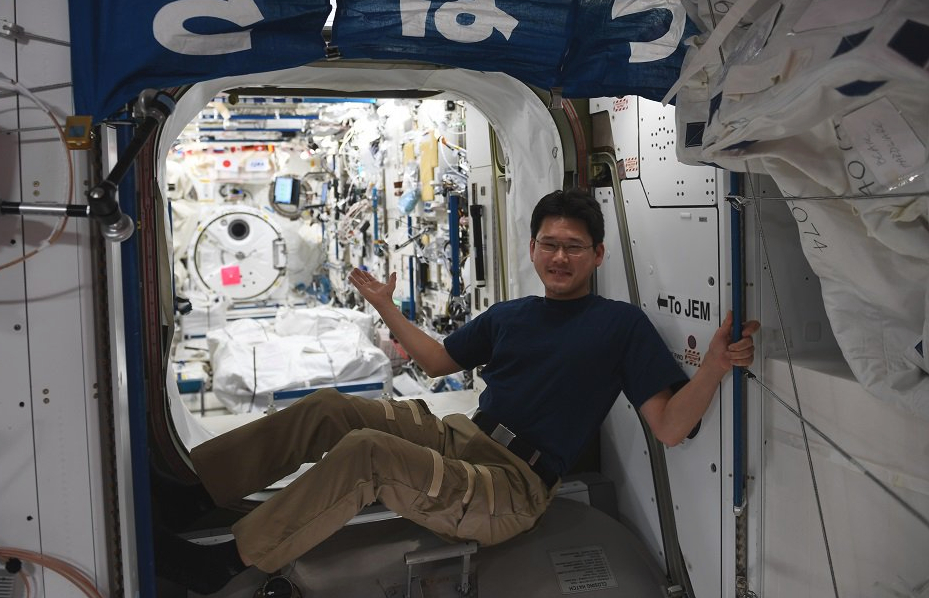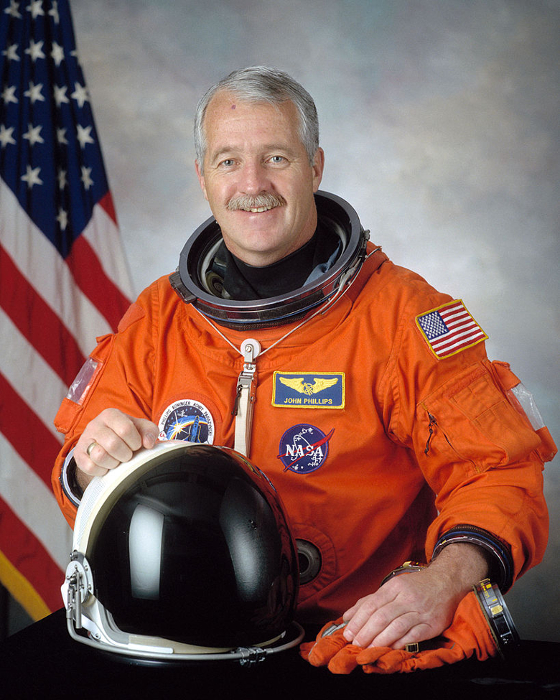Increased growth and visual impairment: what happens to the human body in space

On January 8, the Japanese astronaut Norisige Kanai tweeted that he had grown by 9 cm over three weeks at the International Space Station. He expressed concern that he would not fit on the Soyuz spacecraft, which should return it from the ISS to Earth.
However, later Norisige admitted that he was mistaken and apologized for his tweet - in fact, he grew only 2 cm.
Change in growth is only one of the changes that occur to the human body in conditions of weightlessness . In space, the body is subject to more serious tests. For example, one of the very real dangers is deterioration and even loss of vision.
The phenomenon of cosmic growth
The statement by Norisige Kanai stirred up a whole layer of problems concerning man’s stay in space . And the change in growth is one of them.
Usually in space, the growth of an astronaut increases by 3%, which is on average from 3 to 5 cm. In the absence of gravity, the human spine loses its natural curves. Muscles that provide a tight fit of the vertebrae to each other, weaken. As a result, the intervals between the vertebrae become larger, the spinal column is pulled out and the person grows. Within a few months after returning to Earth, the body takes on its former form.
According to NASA Chief Medical Officer JD Polk, the growth of an adult does not increase only in space. “This is a common phenomenon for the human body, which manifests itself during sleep. In a dream, the spine can disperse half an inch [1.27 cm]. But when a person gets up, the spine returns to its former form, ”he explains.
The main problem for astronauts due to increased growth is the risk of not fitting into the chair seat. The chairs are made individually for each astronaut. During production, a potential increase in growth is taken into account, but sometimes it is impossible to predict how much a person can “stretch out” in weightlessness. In order to keep muscles in shape and control the growth process, astronauts are forced to exercise when they are in space for a long time.
Cosmos spoils the sight
Compared to changes in growth, a more serious problem is visual impairment. About 60% of all astronauts complained of blurred vision and headaches.
For the first time, vision problems were discovered by the American NASA astronaut John Phillips, who in 2005 spent six months on the ISS. During this time, his visual acuity decreased from 1.0 to 0.2. Also about the changes in vision was the American Scott Kelly, who spent a year on the ISS.

The exact cause of the deterioration of vision has not yet been established. A number of scientists and space doctors believe that vision can fall due to the fact that in conditions of weightlessness there is a significant flow of blood to the head. This puts pressure on the eyeballs and optic nerve.
“When the pressure on the nerve increases, its functionality is disturbed and the work of the eyes changes,” explains David Zaveya, a professor at Texas A & M Medical College.
Canadian astronaut and physician Bob Sersk believes that nutrition and a high percentage of carbon dioxide on board, which dilates blood vessels, can have a negative effect on vision. Also, an increase in intracranial pressure may be caused by the Advanced Resistive Exercise Device (ARED), with which the crew maintains physical fitness.
According to another study , a change in intracranial pressure can be triggered by cerebrospinal fluid (CSF), which changes its properties under weightless conditions.
According to the main author of the study, Noam Alperin of the University of Miami, one of the main functions of CSF is to stabilize the pressure. In connection with the violation of gravity, the volume of fluid increases and causes harm to a person. CSF accumulates around the eyes and optic nerves and literally “flattens” them. If an astronaut stays in space for a long time, fluid in the brain will only accumulate. In the future, there is a risk of losing sight or earning farsightedness.
It is remarkable, but only men complained about the deformation of the eye Scientists attribute this to two factors. First, women stretch their blood vessels better. Secondly, the average age of female astronauts is slightly lower compared to male astronauts.
Solving the problem of vision deformation is of paramount importance. “They [astronauts] need to get into orbit, land, do the necessary work , and then return to Earth. To do this, it is vital to preserve vision, ”adds David Zaveya.
Fever
Another serious health problem that is typical for astronauts is cosmic fever. Until now, the problem remains poorly understood.
As the new study of scientists from the Berlin Medical University Charité shows, in zero gravity the body temperature rises and may increase as physical exertion increases. In this case, the temperature becomes not immediately. Enhancement occurs over a couple of months when the human body adapts to new living conditions.
For the study, a system was developed that removes temperature readings from the human body using sensors. Scientists began to collect information about the body temperature of astronauts 90 days before their flight, and completed 30 days after returning. During this time, 11 astronauts wore sensors on their foreheads.
According to scientists, after the astronauts had been in orbit for two and a half months, their temperature during physical activity was constantly above 40. In the absence of loads, the average temperature was 37.

Researchers attribute such changes to the fact that in space, the mechanisms of thermoregulation fail. In connection with this, the level of heat and the amount of sweat that the human body releases are changing. In addition, the sweat evaporates worse from the skin, which interferes with the cooling of the body. According to one of the researchers of the Hanns-Christian Gung project, it is difficult for a human body to free itself from unnecessary heat in zero gravity. In this case, as in the case of growth, thermoregulation is restored after returning to Earth.
It is likely that the list of problems associated with the long-term stay of man in space will continue to expand. Without their solution, plans for space expansion do not look too bright.
References:
How gender affects the adaptation to being in space - The Impact of Sex and the Gender on Adaptation to Space
How astronauts' body temperature changes in long missions - Increased core body temperature during astronauts during long-duration space missions
All Articles